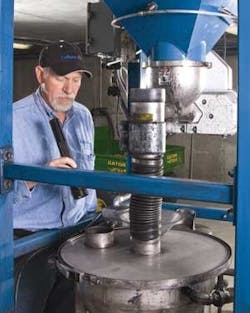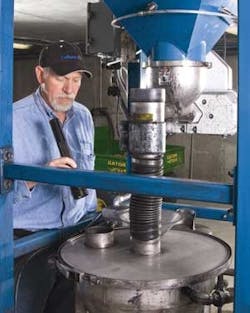Laser System Helps Track Turbidity at Ultra-Low Levels
By Mike Sadar and Kirk Hetherington
Monitoring turbidity of filter effluent is a regulatory requirement for many drinking water treatment plants, and is an important measurement to help understand if a performance issue is imminent. However, at the exceptionally low levels of turbidity found in membrane or high performance conventional filtration facilities, it can be difficult to know whether a small movement in turbidity value is meaningful: Does a slight drift upward signify filter breakthrough or is it just noise?
The cost of not knowing can be high. If a facility acts on a false positive, it can mean shutting down membrane operations to conduct an integrity test or prematurely backwashing a conventional filter. If a breakthrough is not detected immediately, it is possible to allow microbial contaminants such as Cryptosporidium through the water treatment process.
Available Technologies
Based on these consequences, it is important to choose the technology that fits your application. Online turbidimeter manufacturers offer technologies that fit the characteristics of the water and needs for sensitivity for anywhere in the process, from profiling source water, to monitoring backwash or filter effluent water. Just as a turbidimeter used for monitoring source water should be capable of measuring high ranges and compensating for interferences, a turbidimeter used for monitoring membrane filtration or high performance conventional filtration should be capable of ultra low ranges, and provide information that will help the user assess whether changes in NTU values signify a real event.
The most commonly used method for monitoring turbidity in drinking water production uses conventional tungsten or LED light nephelometric technology, which is approved for filtration monitoring under the U.S. Environmental Protection Agency (USEPA) Method 180.1. However, this technology does not provide enough sensitivity to detect ultra low turbidity changes in membrane effluent water.
A newer nephelometric technology, which uses a laser light source, is also approved by the USEPA Method 10133 for monitoring of drinking water. This method is better suited to play the dual role of meeting filter effluent reporting requirements and detecting minute changes in filter performance.
The technology was developed for the Hach FilterTrak 660 sc™ Turbidimeter, which uses a solid state laser diode and sophisticated signal processing to detect a turbidity change as low as 0.0003 NTU and see submicron-sized particles which are often a precursor to larger particles.
Best Practices
The laser nephelometric technology has become more common for use in membrane facilities where it can be used in conjunction with pressure monitoring to detect broken membrane fibers. By seeing a finer resolution of turbidity values and sub-micron particles, it can also be used to gain a clearer picture of conventional filter performance, allowing operators to reduce filter ripening times and detect impending breakthroughs. This can help optimize coagulation dosing and maximize filter life without putting the quality of the water at risk.
The laser technology has been demonstrated to see events that can be missed with a particle counter, and when used in combination, can be used to detail the nature of a filtration event. For example, if the laser turbidimeter observes a significant filtration event, but the particle counter does not observe the same event, the event may be sub-micron in composition, which would provide for an explanation of such differences. This can be a sign that a breakthrough will occur because small particles are able to move through the filter at a faster rate. By seeing an increase in values earlier, operators are able to take action before quality is impacted.
A common question when measuring ultra-low values is whether a change is significant enough to warrant action. A key feature of a laser nephelometer and controller is the calculation and display of relative standard deviation (RSD), which can help to provide a clear picture as to the significance of a change in values. This measurement is simply the standard deviation based on a set number of measurements divided by the mean (average) of the same measurements. The resulting value is expressed as a percent. The higher the number, the more likely that a turbidity event is outside the norm and is likely to represent a breakthrough or integrity issue. This data can be compared to actual turbidity values and events in the plant, such as a chemical feed change or filter backwash, to make an assessment of whether action is required.
The effectiveness of laser nephelometric technology is being proven by many facilities, including in Texas, where the Texas Commission on Environmental Quality requires monitoring of membrane units using the Hach FilterTrak Method 10133 or an approved alternative method. A system must immediately conduct a direct integrity test on any membrane unit that produces filtered water with turbidity level above 0.15 NTU on two consecutive readings.
One of the first and largest membrane systems in the state replaced its traditional turbidimeter network with laser nephelometers. Staff now consider the instruments to be a vital part of their operations, and take action based on their readings. By recognizing the importance of matching the right technology to their application, a growing number of utilities such as this are able to gain efficiency in their operations, and maintain a high quality of water.
About the Authors: Mike Sadar and Kirk Hetherington are with Hach Co. (www.hach.com), Loveland, CO.
More WaterWorld Current Issue Articles
More WaterWorld Archives Issue Articles

